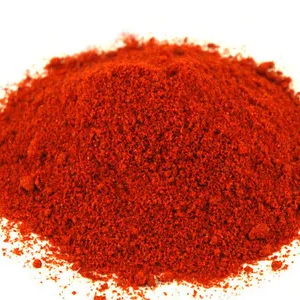
Copper oxide or cupric oxide is the inorganic compound with the formula CuO. A black solid, it is one of the two stable oxides of copper, the other being Cu2O or cuprous oxide. As a significant product of copper mining, copper (II) oxide is the starting point for the production of other copper salts. For example, many wood preservatives are produced from copper oxide. Cupric oxide is used as a pigment in ceramics to produce blue, red, and green, and sometimes gray, pink, or black glazes. It is also used as a dietary supplement in animal feed. It is also used when welding with copper alloys.
Descriptions: A brown black colour free flowing powder.
Total Copper content as 'Cu': 77.0% minimum.
Cupric Oxide as 'CuO': 96.0% minimum.
Iron as 'Fe': 500 ppm maximum
Chloride as 'Cl': 500 ppm maximum
Carbonate as 'CO3': 3000 ppm maximum
Moisture: 0.2% maximum
Insoluble: 0.015% maximum.
Copper(II) Oxide
CuO --- Formula Wt 79.55 --- CAS Number 1317-38-0
REQUIREMENTS
Assay: 99.0% CuO
MAXIMUM ALLOWABLE
Insoluble in dilute hydrochloric acid: 0.02%
Carbon compounds (as C): 0.01%
Chloride (Cl): 0.005%
Nitrogen compounds (as N): 0.002%
Sulfate (SO4): 0.02%
Free alkali: Passes test
Calcium (Ca): 0.01%
Iron (Fe): 0.05%
Potassium (K): 0.02%
Sodium (Na): 0.05%
Copper(II) Oxide, Wire
CuO --- Formula Wt 79.55 --- CAS Number 1317-38-0
REQUIREMENTS
--
MAXIMUM ALLOWABLE
Carbon compounds (as C): 0.002%
Nitrogen compounds (as N): 0.002%
Sulfate (SO4): 0.012%.
Copper (I) oxide or cuprous oxide is the inorganic compound with the formula Cu2O. It is one of the principal oxides of copper, the other being CuO or cupric oxide. This red-coloured solid is a component of some antifouling paints. Cuprous oxide is commonly used as a pigment, a fungicide, and an anti-fouling agent for marine paints. Rectifier diodes based on this material have been used industrially.
Cuprous oxide Cu2O: 97% minimum.
Appearance: Red Powder, Solid.
Total copper, calculated as Cu: 86% minimum.
Total reducing power as cuprous oxide: 97% minimum.
Cupric oxide, CuO: 1% minimum.
Metals other than copper: 0.5% maximum.
Combined chlorides, calculated as Cl, and sulfates, calculated as SO4: 0.5% maximum.
Acetone-soluble matter: 0.5% maximum.
Total nitric acid insoluble residue on a No. 200 (75 μm) sieve: 0.1% maximum.